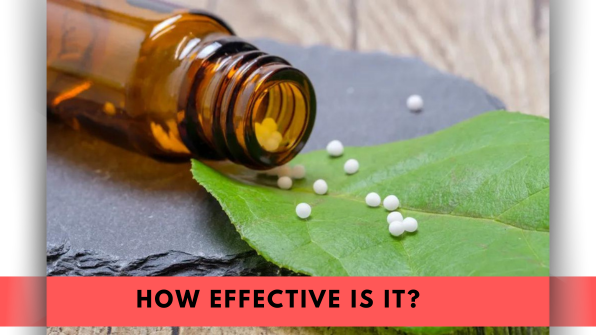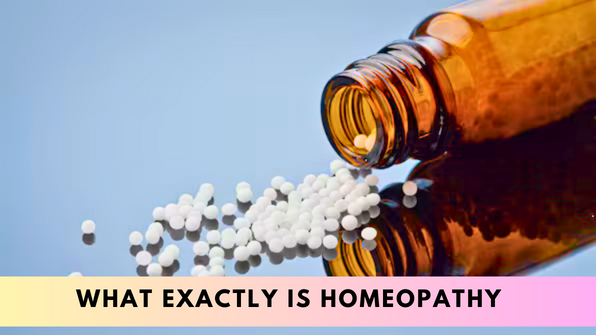A globule for every ailment: homeopathy is extremely popular in. According to a Forsa survey, one or two people have tried homeopathy. At the beginning of the year, Federal Health Minister Karl Lauterbach (SPD) actually announced that statutory health insurance companies would soon no longer reimburse homeopathy. Services that “have no medically proven benefit” should “not be financed from contributions,” said a letter of recommendation from Lauterbach’s ministry . As a report by “Spiegel” shows, globules remain permissible as a voluntary health insurance benefit for the time being. But how effective is homepopathy really? And what makes them different from classic medications?
The most important questions and answers
- What is homeopathy?
- How much do you spend on homeopathic medicines?
- What is the Simile Principle?
- Homeopathic principle: What is dilution all about?
- How does homeopathic anamnesis work?
- What is the difference to herbal medicines?
- What does homeopathy do? Evidence of effectiveness
What is homeopathy?
Homeopathy is an alternative healing system that was invented by the German doctor Samuel Hahnemann in the 18th century. The name is made up of the Greek words homoion (meaning “similar”) and pathos (meaning “suffering”). Homeopathy is based on the idea that “like can be cured by like” and that a substance becomes stronger the weaker its concentration. Many homeopathic medicines are so extremely diluted that no active ingredient molecules can be detected.
In, homeopathic treatments are offered by alternative practitioners as well as by doctors who have completed appropriate additional training. Homeopathy is part of the catalog of services offered by statutory health insurance companies for children up to the age of twelve. Many insurance companies also voluntarily reimburse homeopathic treatments for older children and adolescents and adults.
How much do you spend on homeopathic medicines?
According to data from the Federal Association of the Pharmaceutical Industry, expenditure on homeopathic medicines only accounts for a small proportion of expenditure on medication. The pharmaceutical industry generated sales of around 50 billion euros in 2022 at the expense of the GKV. The GKV spent 6.6 million euros on homeopathic remedies, which corresponds to a share of only around 0.01 percent. The expenses are therefore limited compared to those for other medicines.
What is the Simile Principle?
One of Hahnemann’s basic ideas was the simile principle, where simile comes from Latin and means “the similar”. Hahnemann assumed that physical complaints would improve when substances were administered that would cause similar symptoms.
For insect bites, homeopathy recommends taking globules based on bee venom, for example. If a child suffers from nausea and vomiting, many parents rely on homeopathic medicines with extracts of Pulsatilla, a poisonous buttercup plant that would also cause vomiting and nausea in normal concentrations. Many other poisons such as belladonna belladonna poison, arsenic, cyanide or snake venom are also used in homeopathy. This is not dangerous only because these substances are present in minimal doses when preparing homeopathic globules and tinctures, i.e. in the proverbial “homeopathic doses”.
On the other hand, not every homeopathic treatment is based on the simile principle: for bumps and bruises, homeopathic remedies prepared from a dilution of extracts from the arnica plant are recommended. Arnica extracts are also contained in normal, i.e. many times higher, doses in many sports ointments for external use and are said to have anti-inflammatory properties. The substances used in the preparation of homeopathic medicines are extremely diverse: they range from bat milk to dog feces.
Homeopathic principle: What is dilution all about?
Followers of homeopathy believe that the more often a substance is diluted according to homeopathic principles, the stronger it becomes. When producing homeopathic medicines, the original active ingredient is repeatedly diluted with water and alcohol in several stages. The resulting dilutions are called powers and are each marked with a letter and numbers from which the dilution ratio can be derived. The power D stands for tenfold dilution, a power C for a hundredfold. The number behind the letter indicates how often the dilution process was carried out.
For a potency of C12, one part of the starting substance is first diluted with 99 parts of water and alcohol. Another part of this dilution is then taken and 99 parts of water and alcohol are added. A potency of C12 means that this process is repeated twelve times, i.e. a substance has been diluted one hundred times twelve times.
Mathematically, from such a dilution level no active ingredient molecule can be contained. According to the ideas of homeopathic teaching, information is transferred from the active ingredient molecules to the water by “shaking” after each new dilution. Homeopathy is based on a “memory of water”, a “subtle energy” or vibrations that are transmitted. However, there is no evidence from natural science that such a “memory of water” exists. Homeopathic medicines can be taken as a solution or in the form of tablets or globules that have been sprinkled with a homeopathically diluted solution.
How does homeopathic anamnesis work?
A complete homeopathic anamnesis not only asks about a person’s health problems. The person treating the patient also asks about the patient’s state of mind, typical behavioral patterns and sensitivity to heat and cold, or how they tolerate certain foods. In reference books, which are now also available online, people then look for a remedy that suits the symptoms in the sense of homeopathic teachings. This means that it would trigger physical symptoms similar to those being treated. However, ready-made homeopathic mixed preparations for certain complaints are now also available in pharmacies or over the Internet.
What is the difference to herbal medicines?
Conventional herbal medicines differ significantly from homeopathic remedies. Non-homeopathic herbal medicines contain plant extracts or parts that are not extremely diluted according to homeopathic principles. So they have a normal active ingredient content. For a stronger effect, a higher dosage is recommended for herbal remedies according to the guidelines of classical medicine and not a lower dosage as with homeopathy. The use of herbal medicines is also not based on the basic idea of treating like with like. Instead, as with other classic medicines, attempts are made to specifically counteract symptoms.
What does homeopathy do? Evidence of effectiveness
As with any form of medical treatment, a placebo effect can also be assumed with homeopathic therapy. It has been proven many times that health problems improve even when sick people are given an ineffective dummy preparation. Just the act of expecting that a medicine will alleviate the symptoms has a noticeable effect. The holistic approach to classic homeopathic treatment can also have an effect: the patient’s mental state is discussed during the anamnesis and the treatment can be accompanied by lifestyle or nutritional advice.
As soon as patients take homeopathic medication alongside other measures, it is no longer possible to say what caused an improvement in their health. An effectiveness of homeopathy that goes beyond the placebo effect has not yet been proven. Advocates of homeopathy like to cite individual studies in which such an effect was observed. However, their validity is questioned by other scientists.

